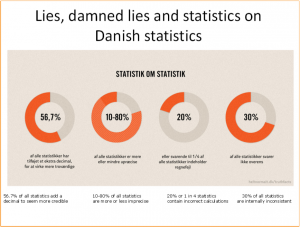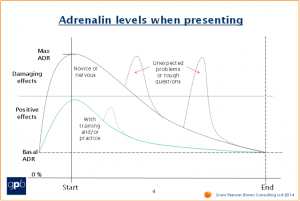I recently saw a table of data comparing air quality in the last 5 Summer Olympic cities. Rio was second worst to Beijing. London was best.
I am sure the data were sound, although no source was given. Perhaps the IOC?
I should stress that in writing this article for you I have not been the victim of some scam, embarrassed by something I or someone else has presented, or seen any new research on the matter.
It’s just that the air quality data reminded me that we place a great deal of trust in what we see presented to us in the visual form (Vidi: I saw), whether it be air quality readings, fund performance or the population of a city. But should we trust so easily?
We have to play devil’s advocate in much of our work, and as part of this are big fans of the quote attributed to Benjamin Disraeli: “there are thee kinds of lies: lies, damned lies, and statistics” to which we would add for presentations “and then there are visual aids”.
Visuals are intended to aid the speaker in the act of communication, to assist the reader to comprehend, and to be analysed after the event.
It is true that visuals largely do this, and I should stress that in some sectors we work in, notably financial services and pharmaceuticals, there are some very dedicated people whose job it is to remove malfeasance, misdemeanour and misrepresentation.
A very worthy, if not highly paid cause.
Here is a slide we made ourselves. Notice anything?
Visual aids are in a whole category of their own. The information presented in this medium is by and large trusted, taken as read to be true, and because of this is rarely if ever verified.
So there is an onus on the creator of the presentation to be honest and trustworthy with the visuals they create.
And yet we all “know of someone” (but never us, oh no…) who has taken a set of data and presented them in a misleading, disingenuous, or false way, or to bolster weak arguments.
Simple tricks include:
- the setting of start and end dates to suit their purposes
- the use of scale or non-zero origin on a Y axis that conveniently flattens or steepens a line or bar graph
- the incorrect relative size given to different images
- The misleading use or alignment of colours and shapes
- Using out-of-date data
- Using false logic e.g. in ‘therefore’ arrows that deem to show premise and conclusion
- An over-assertive or reasonable-looking claim about future events (which no-one can know for sure)
- Hub and spoke imagery that makes false or overstated connections
- The use of own source material that cannot easily be verified
- Conflicting data or information on different pages.
So, the point I really want to make here is for both presenters and their audiences, as most of you will be one or the other at various times:
If you are the presenter, it is your moral duty to ensure that your visual aids tell the whole truth, and as a member of an audience, you need to have a sceptical eye on what you are shown, as visuals have a high credibility that they may (or may not!) deserve.
By Ewan Pearson
gpb-60th-journal-summer-2016-article-1-ep-visual-aids



